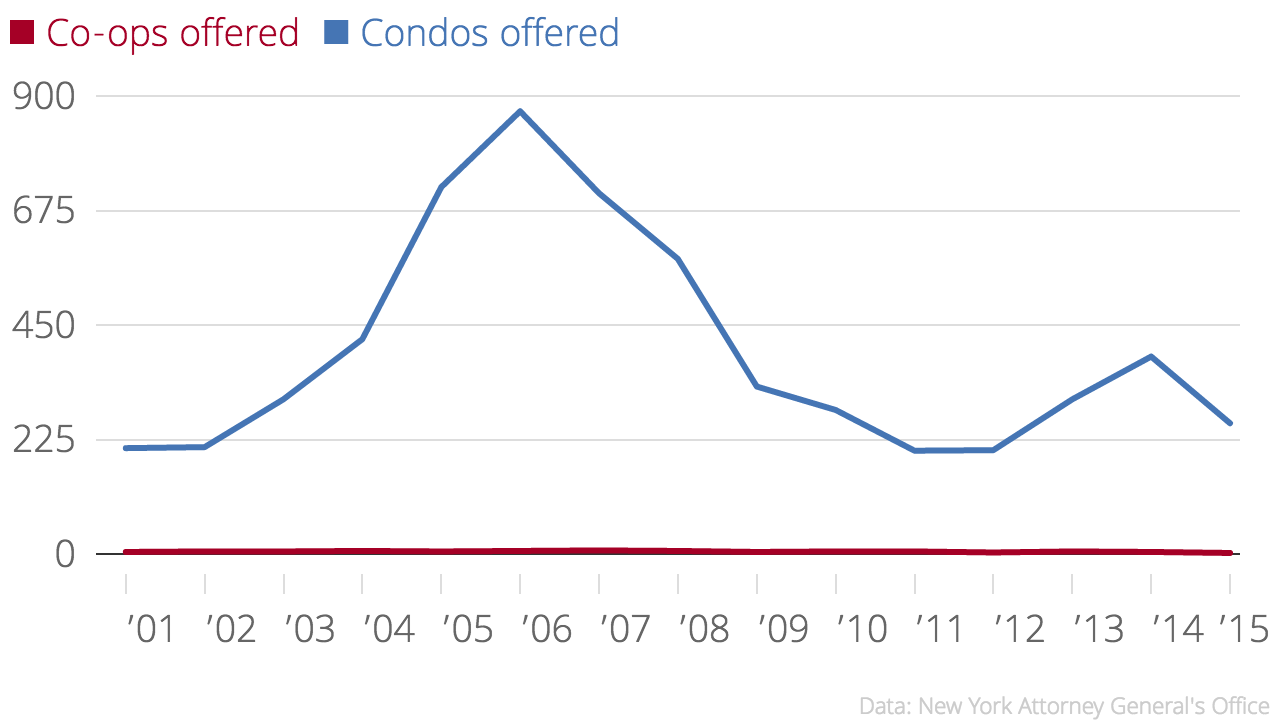In 1882, the developers of the Rembrandt declared they were seeking “people of means and good social standing,” as owners. The building, at 152 West 57th Street, was New York City’s first co-op, a form of vertical living that quickly became ubiquitous in the city and still makes up a good chunk of its housing stock. But the age of the co-op is well and truly over: Since 2000, developers have moved to create a mere 75 new co-op projects, and no more than seven total in any given year, according to a new analysis by The Real Deal.
Just two new co-op plans were filed in 2015, and two more so far this year: a conversion at the 92-unit 644 Riverside Drive in Hamilton Heights, and a 39-unit new development at 269 West 87th Street on the Upper West Side. That’s according to offering plan data from the New York State Attorney General analyzed by TRD.
Compare that 75 number to 6,155, which is the number of new condominium plans filed over the same period. In 2006, the year of peak activity, developers filed 870 new condo plans.

Source: TRD analysis of AG condo filings.
On top of that, the majority of the co-op plans filed were actually for cond-ops, a legal structure in in which a building’s residential units operate like a co-op, but commercial units are treated as condos, allowing developers to profit off a building’s lucrative commercial space.
So, what’s the deal?
The condominium ownership structure has only been legal in New York since 1964. Many prospective homeowners were initially skeptical of condos. But over time, their less stringent disclosure rules and the fact that they were easier to trade boosted their popularity.
“When you’re buying a condo you actually own it, and what the board can do to subvert your transfer of the property is very minimal,” said Shaun Pappas, an attorney at Starr & Associates who specializes in condominium law. “The only time we see co-ops being built now are cond-ops,” Pappas said.
Over the past decade, condos appear to have been the better investment:
The median co-op price was $755,000 in 2015, a 12 percent increase from 2006. Those gains pale in comparison to the condo market, which had a median price of $1.52 million in 2015, a 52 percent leap from a decade earlier.
The distinction between condos and co-ops may be getting less pronounced, however.
“Co-ops are loosening up and condos are adding restrictions,” said Dean Roberts, an attorney at Norris McLaughlin & Marcus, adding that it is simultaneously becoming harder for co-ops to deny potential buyers and more common for condo boards to tighten their own rules.
